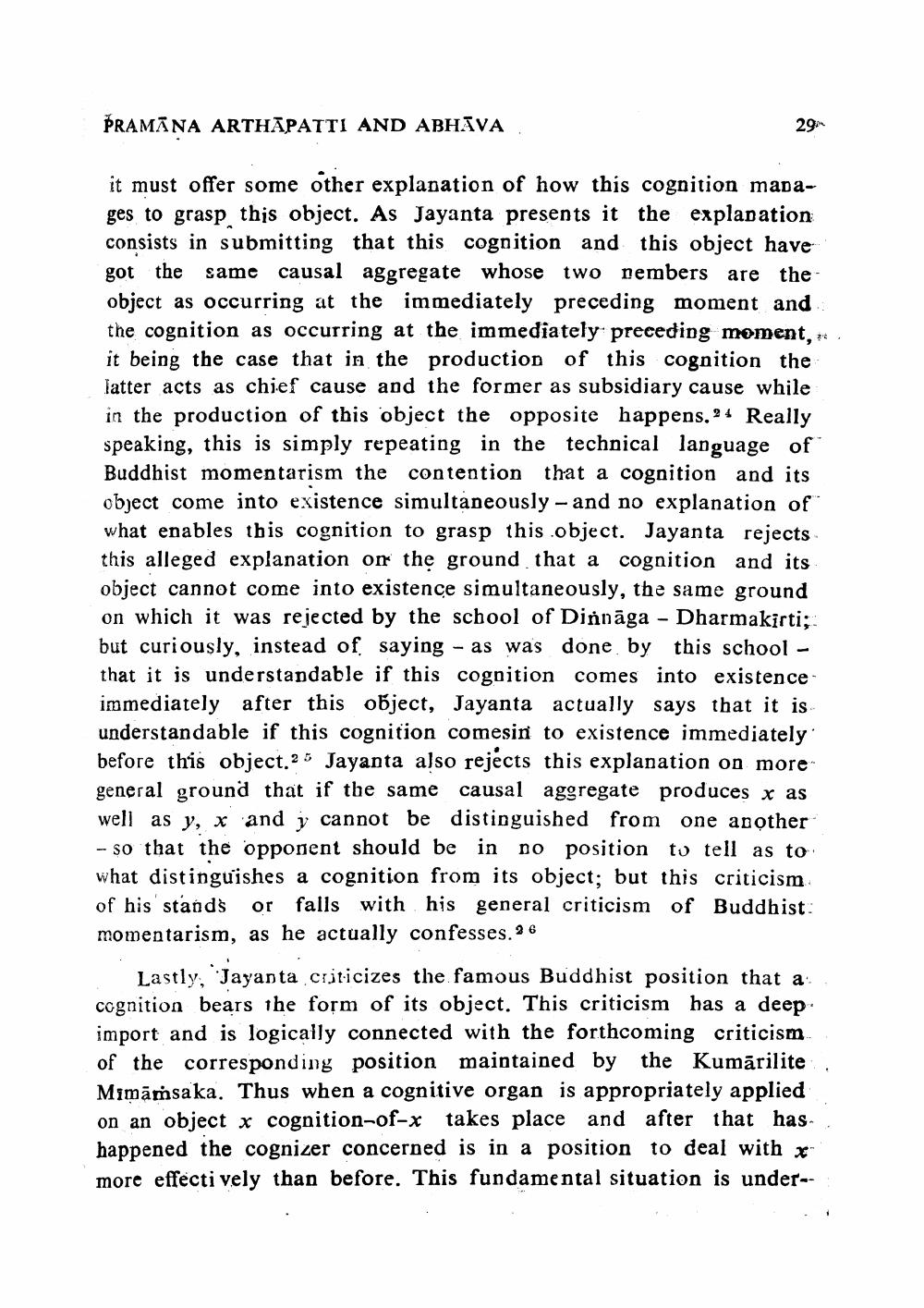________________
ÞRAMĀNA ARTHĀPATTI AND ABHÄVA
29A
it must offer some other explanation of how this cognition manages to grasp this object. As Jayanta presents it the explanation consists in submitting that this cognition and this object have got the same causal aggregate whose two nembers are the object as occurring at the immediately preceding moment and the cognition as occurring at the immediately preceding moment, ** it being the case that in the production of this cognition the latter acts as chief cause and the former as subsidiary cause while in the production of this object the opposite happens. 4 Really speaking, this is simply repeating in the technical language of Buddhist momentarism the contention that a cognition and its object come into existence simultaneously - and no explanation of what enables this cognition to grasp this .object. Jayanta rejects this alleged explanation or the ground that a cognition and its object cannot come into existence simultaneously, the same ground on which it was rejected by the school of Dinnāga - Dharmakirti; but curiously, instead of saying - as was done by this school - that it is understandable if this cognition comes into existence immediately after this object, Jayanta actually says that it is understandable if this cognition comesin to existence immediately before this object.25 Jayanta also rejects this explanation on more general ground that if the same causal aggregate produces x as well as y, x and y cannot be distinguished from one another - so that the opponent should be in no position to tell as to what distinguishes a cognition from its object; but this criticism of his stands or falls with his general criticism of Buddhist: momentarism, as he actually confesses. 96
Lastly, Jayanta criticizes the famous Buddhist position that a cognition bears the form of its object. This criticism has a deep import and is logically connected with the forthcoming criticism , of the corresponding position maintained by the Kumārilite Mimāmsaka. Thus when a cognitive organ is appropriately applied on an object x cognition-of-x takes place and after that has happened the cognizer concerned is in a position to deal with x more effectively than before. This fundamental situation is under--




